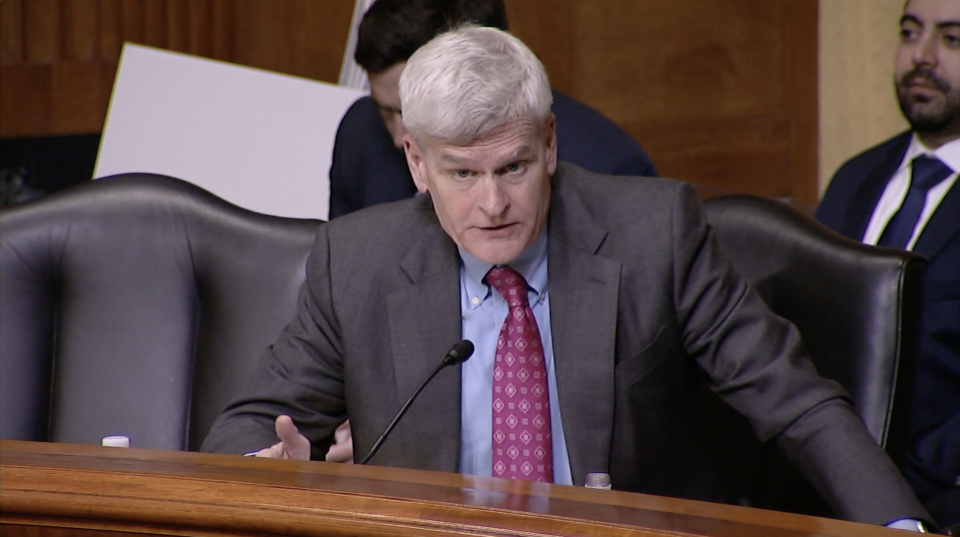
Richard Vegas
May 1, 2019
What to Do if Your Car is Damaged by a Pothole
May 1, 2019A lead advocate with Together Louisiana believes there is a disconnect between industry and the state’s economy.
Broderick Bagert said folks should be curious as to how a state who is ranked No. 1 for salt production, No. 2 for oil refining and sugar production, No. 3 in rice production and No. 4 in chemical production can possibly be ranked No. 48 in the nation for reading, No. 48 in life expectancy, No. 49 in mathematics, No. 49 in poverty rate, and dead last in a review of income gaps by gender.
“If we’re so rich, why are we so poor, so dead last?” Bagert asked. “At Together Louisiana, we believe it’s because industrial manufacturing has enjoyed an enormous influence over public policy for nearly 80 years; it’s been in the constitution since 1936.”
Bagert is the lead advocate with Together Louisiana, a statewide network of more than 250 religious congregations and civic organizations, representing more than 200,000 people.
For years, he said Louisiana has given incredible 10-year tax breaks to big industry, to lure corporations, in exchange for jobs.
“But now, Louisiana is at the bottom of the list. We are spending $2,857 per capita in corporate subsidies, as opposed to $291 per capita, the national average,” he said.
Bagert said the organization has a 15 minute video on its website at www.togehterla.org, which explains their research on Louisiana’s industrial tax exemptions.
“We’re not against business,” but there needs to be reconsiderations in order to improve the community and quality of life, he said.
He explained the industrial exemption process, which lies in the hands of the state Board of Commerce and Industry.
“We are the only state in the nation to have this board, which votes on granting industrial tax exemptions without any local entities having any say on whether or not they can. And there has never been any scrutiny.”
But he said in 2016, Gov. John Bel Edwards issued an executive order saying he was not going to sign any more exemptions, unless the local entities that are affected, sign off on this.
In the first few months afterward, Bagert said one or two of the exemptions came through in a few parishes.
“Local folk took a close look, and they rejected one request, while another, granted the business their ask – and that’s the way it should be,” Bagert said.
But currently, he said the legislature is considering three bills to roll back the governor’s order: Senate Bill 214, House Bill 539 and House Continuing Resolution 3, which would still give school boards and others a voice; but, that voice would be one or two out of 27 votes.
“I urge all of you to speak to your representatives about this. The old way hasn’t worked, and it’s time for folks to evaluate these requests,” he said.
Bagert shared statewide assessor reports from 2017 which showed the amount of industrial tax exemptions in Terrebonne and Lafourche Parishes and their affect on each parish.
The information is derived from each parish’s respective assessor.
In Terrebone Parish, taxpayers coughed up $85.2 million in property tax payments. However, the total property tax revenue lost under the industrial tax exemption was $5.5 million.
That figure, they calculate, represents a loss of $880,400 to schools, $1.7 million to the parish’s general fund, $574,000 to the sheriff’s office, $823,000 to the parish fire districts, $125,400 to the parish public health units, $602,800 to parish parks and recreation, $5,000 to roads and bridges, $294,900 to levee protection and $443,800 to drainage and flooding.
Meanwhile in Lafourche, taxpayers shelved out $11.8 million in property tax payments, but the total industrial exemption loss was $7.7 million.
That calculation represents a loss of $2.7 million to schools, $1.6 million to the parish’s general fund, $836,000 to the sheriff’s office, $456,000 to the parish fire districts, $328,400 to the parish libraries, $441,400 to the parish public health units, $128,300 to parish parks and recreation, $277,000 to roads and bridges, $648,900 to levee protection and $240,800 to drainage and flooding. •









